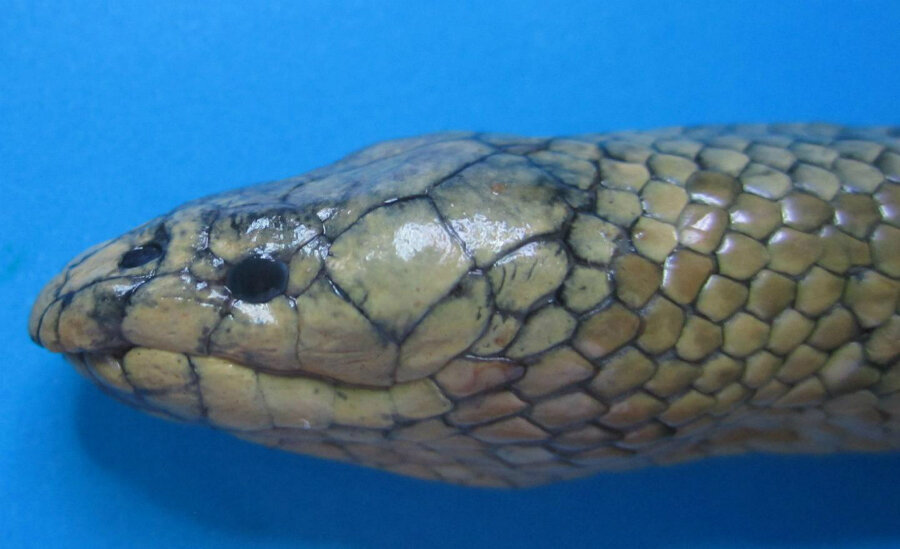What can we learn about salinity from venomous sea snakes?
Loading...
As scientists are detecting rising sea levels and salinity in coastal waters, some wonder: Will sea animals be able to adapt to the changing conditions?
A new study by several researchers from Iran and France may help future researchers study how a rare, venomous sea snake might have evolved to live in saltier waters, as biologists and conservationists wonder how other species will fare in similar conditions around the world.
When they stumbled upon this discovery, they were collaborating on a project to update the checklist of sea snakes present in the Persian Gulf and Gulf of Oman. Other than the nine known species of sea snakes residing in the gulf, they found a 10th species – the Günther’s sea snake – more than 250 miles away from the westernmost boundary of its previously known range.
The presence of the small-headed sea snake so far away from its original habitat is significant because the Persian Gulf, according to the study, has high salinity and sea surface temperatures year round. It was the first time the species has been found in the region.
“Biota living in the Gulf must adapt to high temperatures and a hypersaline environment,” the study authors wrote. “The Persian Gulf can be considered as an excellent natural laboratory to study the adaptive responses of the rapidly evolving sea snakes to high salinities and fluctuating temperatures.”
The Günther’s sea snake has only been found in waters off the Malay Peninsula to Pakistan since its discovery by German-born British zoologist Albert Günther in 1864.
Scientists studying the effects of climate change are curious about animal adaptation to salinity because rising sea levels and temperatures can increase the salinity of groundwater, push salt water further upstream, and harm aquatic plants and animals, according to the Environmental Protection Agency.
Previous studies have found that warmer temperatures over the Atlantic Ocean lead to increased evaporation and reduced rainfall from Africa to the Caribbean. As reported by The Guardian, north Atlantic waters had decreasing salt levels, while the Atlantic waters further south, toward the tropics, has been getting saltier since the 1960s.
Rising sea levels and salinization of groundwater and soil is already affecting some areas of the world, from the Everglades National Park in Florida to Bangladesh.
“These coastal communities are home to many rare and endangered plants such as tropical orchids and herbs, some of which are found only in south Florida.... It is unclear whether or not these species can tolerate the increased salinity that will come as sea level continues to rise due to climate change,” according to a National Park Service report on Everglades National Park.
Rising salinity is not the only condition animals have to adapt to. As The Christian Science Monitor previously reported, increasing acidification of the ocean has caused spiny damselfish to adapt their circadian rhythms, while phytoplankton may have to rely on faster ocean currents to find waters with the perfect temperature, salinity, and nutrient concentration.
But even if animals can successfully adapt to the changing conditions, it doesn’t guarantee survival.
"Biological systems are very complex," Lars Tomanek, director of the Environmental Proteomics Laboratory and professor of biological sciences at California Polytechnic State University, told the Monitor in August, after the release of the damselfish study. "We are in for many more surprises and discoveries, but from what we see already, we know it’s going to be a tough time for most organisms.... There are going to be a few winners, but there are going to be quite a few losers."








